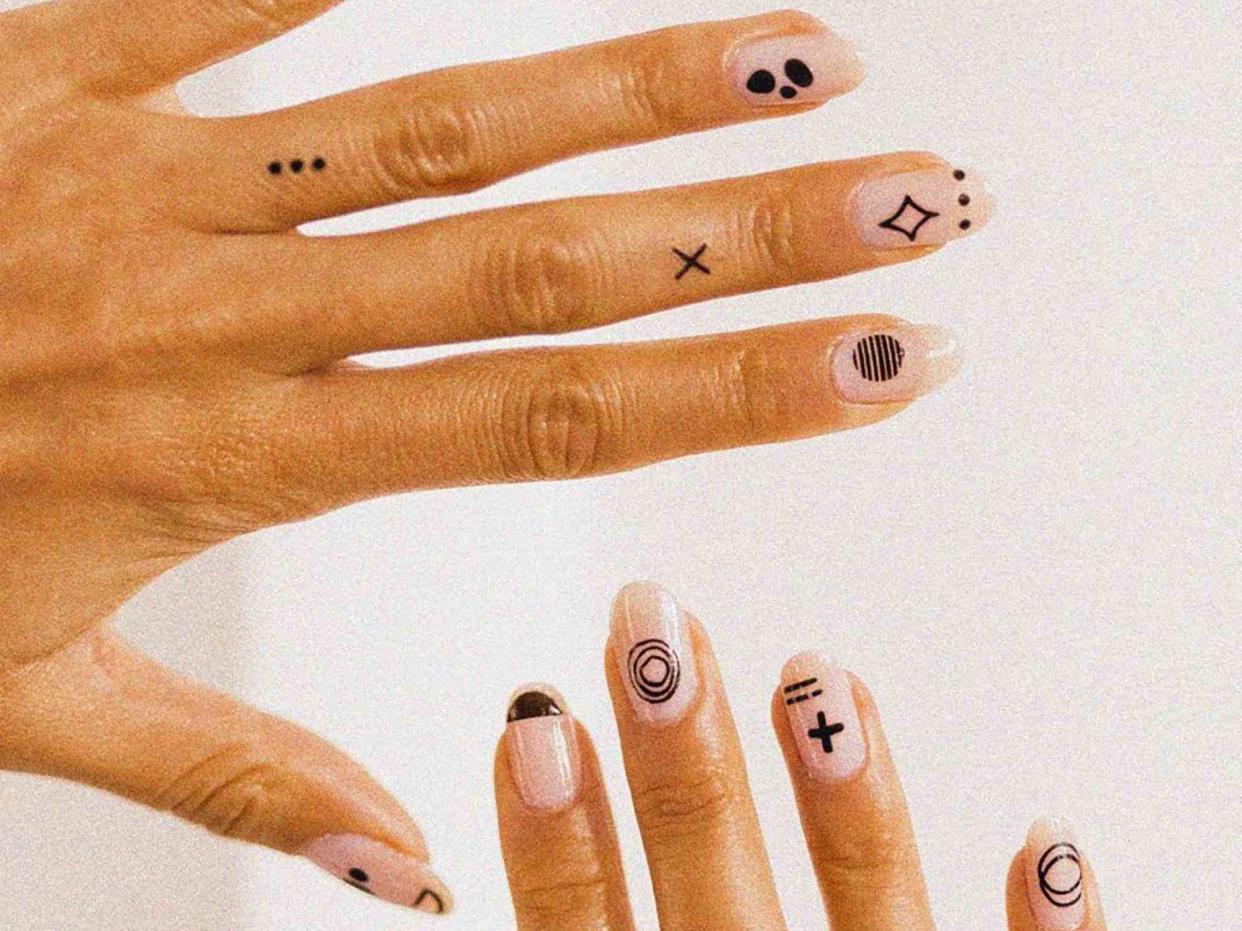Nail Tattoos Are the Latest Way to Add Trendy Art to Your Fingertips

@inked.bydani / Instagram
Among the many ways people use aesthetics for expression, nail art and tattoos are two of the most popular. So it feels almost inevitable that a trend would come along that would combine the two. Nail tattoos—which, as the name suggests, are ink tattoos applied directly to the nail—have been gaining popularity thanks to their temporary(ish) lasting time, low pain level, and visual appeal.
So, to learn more about them, we tapped professional tattoo artist Pobi and board-certified dermatologists Brendan Camp, MD, and Anna Guanche, MD. Read on to learn everything you need to know about nail tattoos, from how they're applied to how long they last.
Meet the Experts
Pobi is a professional tattoo artist based in New York City.
Brendan Camp, MD, is a double board-certified dermatologist specializing in medical and cosmetic dermatology at MDCS Dermatology.
Anna Guanche, MD, is a board-certified dermatologist at Bella Skin Institute.
What Are Nail Tattoos?
Long story short, a nail tattoo is an ink design on the surface of the nail. The process is the same as getting a tattoo on your skin, except, in this case, it's applied to the nails, explains Pobi. Eventually, a nail tattoo will grow out. When applying a nail tattoo, the artist will use the same type of ink and tattoo gun used for skin tattoos. "The pigment is placed superficially enough so that [it] does not affect skin below the nail, known as the nail bed," adds Camp.
Benefits of Nail Tattoos
Nail tattoos have several benefits. Here are some at the top of the list:
They're temporary—no need to commit to a design for life as you would with a skin tattoo. But definitely make sure you're ok with living with your nail tattoo design for the next six months or so because it will be there until your nail grows out.
You can choose from a huge variety of designs. They're a great way to express your personal style.
Nail tattoos don't really hurt. "Nail tattoos are... reported to be associated with minimal to no pain because the procedure affects tissue without nerve endings," Camp explains.
How Nail Tattoos Work
Applying nail tattoos involves multiple steps, Pobi explains. First, the tattoo artist will prepare a tattoo gun, tattoo ink (either black or colored), and some A&D ointment for the skin. Then, they might use a stencil and a Sharpie or pen to stencil the design onto the nails. Many tattoo artists, including Pobi, skip the stencil and tattoo the design directly onto the nail freehand.
Once your tattoo artist is finished, you'll be able to leave right away—but you may want to use some top coat once you get home to help seal in the ink and prevent fading. "There are no finishing steps," Pobi explains. "But I tell clients it's better to apply top coat at home so the tattoo ink stays on the nail surface longer."
Nail tattoos might fade a bit but typically last about six months until the nail grows out. "The nail tattoo will eventually be replaced by a new nail," Camp says. "As a result, the appearance of the tattoo can be affected as it reaches the end of the nail."
Are Nail Tattoos Safe?
"Nail tattoos are usually safe if they are done correctly and only by a professional—never do it at home," Guanche says, "It's important that the tattoo is done at the correct depth and not too deeply where it could cause an injury, bleeding, or even a painful infection." The dermatologists we spoke with pointed out that nail tattoos come with a few risks, including an allergic reaction to the tattoo ink, infection, bleeding, scarring, and accidental placement of pigment in the nail bed.
When a nail tattoo is correctly applied to the nail plate, the nails should grow normally. However, "if there is an injury to the nail matrix, which is located just in front of the cuticle, [the] associated inflammation could affect the growth and appearance of the nail," Camp says. Problems can also occur if the fingernail is thin or weak and too much pressure is used when making the tattoo. "It can cause the nail to crack or split in half, [which] can be very painful and lead to an infection," Guanche says.
Removing Nail Tattoos
A nail tattoo will be around until your nail grows out, so it definitely isn't as much of a commitment as a tattoo on your skin, but it's still a commitment: A nail tattoo may fade, but it can't be removed. "Since the ink is only on the surface... it can wear out over time, like how regular manicure wears out over time," Pobi says. "That's why I tell my client to put a top coat (any regular top coat works) over nail tattoos to protect the ink from wearing out over time."
The Final Takeaway
Applied to the surface of your nail using equipment that's used for skin tattoos, nail tattoos are a fun, non-permanent, and fairly safe way to express your personal style. If that sounds appealing to you, "Do your research on the tattoo professional, ask questions, and ask to see examples of their previous work on fingernails" before booking an appointment, advises Guanche.
Up Next: Debunking the Semi-Permanent Tattoo Myth
Read the original article on Byrdie.

